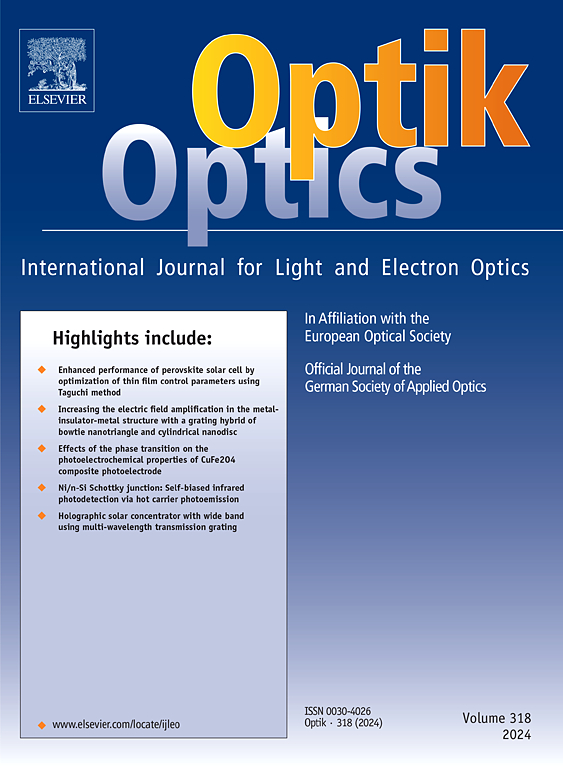Accounting for intensity variation within pixels of Shack-Hartmann wavefront sensors
IF 3.1
3区 物理与天体物理
Q2 Engineering
引用次数: 0
Abstract
The accuracy of centroiding algorithms in Shack-Hartmann wavefront sensing is limited by the implicit approximation of uniform pixel illumination. Iterative centroiding algorithms are further limited by the consideration of full pixels to define the image domain for centroiding. Here, we demonstrate two practical and complementary approaches to mitigate both these sources of error. First, we consider partial or ‘fractional’ pixels to maintain centroiding area symmetry around the center of mass. Secondly, we propose methods to perform piece-wise polynomial interpolation to calculate intensity distribution within pixels, which is then used to estimate the centroid within each pixel area. This approach that accounts for intensity non-uniformity across pixels notably reduces centroid errors up to a factor of 5 across lenslet image widths ranging from 1.33 to 3.10 pixels full-width-half-maximum (FWHM). Consequently, wavefront sensing errors decrease from 14 % to 4 %, on average, for FWHM = 1.35 pixels, demonstrating a substantial benefit when the number of pixels per lenslet is minimized to enhance the signal-to-noise ratio or increase frame rate.
考虑夏克-哈特曼波前传感器像素内的强度变化
Shack-Hartmann 波前传感中的中心定位算法的精度受到均匀像素照明的隐含近似值的限制。而迭代中心定位算法又因需要考虑全像素来定义中心定位的图像域而受到进一步限制。在这里,我们展示了两种实用且互补的方法来减少这两种误差来源。首先,我们考虑了部分或 "小数 "像素,以保持质量中心周围的定中心区域对称。其次,我们提出了执行片断多项式插值的方法,以计算像素内的强度分布,然后用于估算每个像素区域内的中心点。这种方法考虑到了像素间强度的不均匀性,在小透镜图像宽度为 1.33 至 3.10 像素全宽-半最大值(FWHM)的情况下,可将中心点误差显著降低 5 倍。因此,当 FWHM = 1.35 像素时,波前感应误差平均从 14% 降至 4%,这表明当为了提高信噪比或提高帧频而尽量减少每个小透镜的像素数时,波前感应会带来很大的好处。
本文章由计算机程序翻译,如有差异,请以英文原文为准。
求助全文
约1分钟内获得全文
求助全文
来源期刊

Optik
物理-光学
CiteScore
6.90
自引率
12.90%
发文量
1471
审稿时长
46 days
期刊介绍:
Optik publishes articles on all subjects related to light and electron optics and offers a survey on the state of research and technical development within the following fields:
Optics:
-Optics design, geometrical and beam optics, wave optics-
Optical and micro-optical components, diffractive optics, devices and systems-
Photoelectric and optoelectronic devices-
Optical properties of materials, nonlinear optics, wave propagation and transmission in homogeneous and inhomogeneous materials-
Information optics, image formation and processing, holographic techniques, microscopes and spectrometer techniques, and image analysis-
Optical testing and measuring techniques-
Optical communication and computing-
Physiological optics-
As well as other related topics.
 求助内容:
求助内容: 应助结果提醒方式:
应助结果提醒方式:


